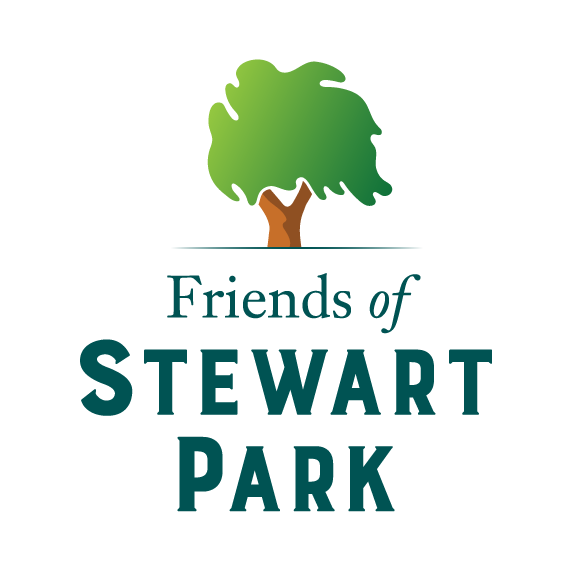People have reshaped the land at the southern tip of Cayuga Lake over centuries to become our modern park.
The landscape has lived many lives: home to a Cayuga Nation village, trolley amusement park, silent film studio, and finally Stewart Park.
You can explore park history in the timeline below, through FSP’s videos, or a Pocket Sights self-guided tour.
Self-guided learning
Stewart Park Minute
Did you know that Stewart Park opened as a public park in 1921? Discover the Park’s rich history through short videos and webinars FSP has done in the last years available on the Friends of Stewart Park YouTube Channel.
Pocket Sights walking tour
You can journey through Stewart Park history at your own pace by taking a virtually-guided Pocket Sights tour. You can follow along from the park by downloading the Pocket Sights app or enjoy the tour from home using the website.
For more information on park history, you can articles researched and written by John M. Bacon of Historic Ithaca in the 1970s. You can read an extensive history of the Ithaca Waterfront here.
Pre-19th century
Before the North American continent had been settled by Europeans, the indigenous peoples of the Gayogo̱hó꞉nǫˀ (Cayuga Nation) founded the village of Neodakheat in the area where Stewart Park is now located.
See the Friends of Stewart Park Land Acknowledgement.
In the late 1790s, the U.S. government purchaced and/or took lands from the Cayuga People, deplacing the Gayogo̱hó꞉nǫˀ.
Andrew Moodie received Military Lot No. 88, land purchased by the U.S. as part of his land grant after service in the Revolutionary War. James Renwick, a prominent American architect, bought part of this grant.
1890s: Cascadilla School & Renwick Park
In the early 1890s, the Cascadilla School purchased forty acres of land to develop athletic facilities, leading to the construction of the Cascadilla Boathouse.
A trolley line to the lake was constructed by the Cayuga Lake Electric Railway Company (later absorbed by the Ithaca Street Railway Company), who then created an amusement park by the lakeside. Renwick pier was built for steamboat excursions, and the restaurant and dancing pavilions, bandstand, water tower and other structures were designed by architects Vivian and Gibb. These forty acres, including Port Renwick, opened to the general public in 1894 and became known as Renwick Park.
1910s: Rise of the Silent Film Studio
After years of declining interest in the trolley park, due in part to the rise of the automobile, the Ithaca Street Railway was dissolved and the Renwick Park and Traffic Association was formed to replace it. The Association then privately leased the park to the Wharton brothers to use as a film studio in 1915, around the same time that trolley access to the park was discontinued. The studio was also sublet by other film studios, including International Films and Grossman Studios.
1920s: Establishment of Stewart Park
The newly elected mayor of Ithaca, Mayor Edwin C. Stewart, expressed interest in making the area into a municipal park. Ithaca’s population had doubled since 1890, but few recreational resources were available. Overwhelming support for the creation of this lakeside park came from the Journal, Rotarians, Boy Scouts of America, the Campfire Girls, and other Ithaca residents. In 1921 the City of Ithaca purchased the park from the Renwick Park and Traffic Association. Initial renovations included beach cleanups, removal of trolley tracks, and bandstand refurbishment. When Mayor Stewart passed away one month before the park’s formal opening on Independence Day, the park was renamed in his honor.
After Stewart Park opened, efforts to improve the park continued. Much of the work in Stewart Park revolved around raising the level of the park and stabilizing its shoreline. The Cascadilla Boathouse became part of the park in 1923 after its purchase from the Cascadilla School, and in 1927 a flagpole was erected south of the pavilion complex as a permanent memorial of Mayor Stewart and his efforts.
1930s
Major improvements to the park in the 30’s include the addition of tennis courts on the eastern range, the creation of the Newman Municipal Golf Course, and the acquisition of the Cornell Biological Station. In 1934, a stone observation platform was constructed near the Cascadilla Boathouse, and the area surrounding the platform was renamed the “Fuertes Bird Sanctuary” in honor of former Cayuga Bird Club President, Louis A. Fuertes.
1940s to 2000
Stewart Park was home to a small zoo that featured animals such as peacocks and deer. Swimming was a popular summer activity, and there was ice skating in winter. Though these activities eventually proved unsustainable for safety and ecological reasons, they provided fond memories for all who participated. The carousel that was installed in 1951 is still running today, as is the Splash Pad. Stewart Park day camp has been a summer staple for over 70 years.
Today
Stewart Park features spacious lawns, tennis courts, a non-motorized boat launch, a historic carousel, a splash pad and a state-of-the-art accessible playground. The park is a popular destination for picnics, fishing, birding, and enjoying the Cayuga Waterfront Trail. Kayaks and paddle boards are available for rent during the summer, and three pavilions are available to rent. Friends of Stewart Park partners with the City of Ithaca, Wharton Studio Museum and other stakeholders to revitalize Stewart Park and the Cayuga Waterfront Trail.
















